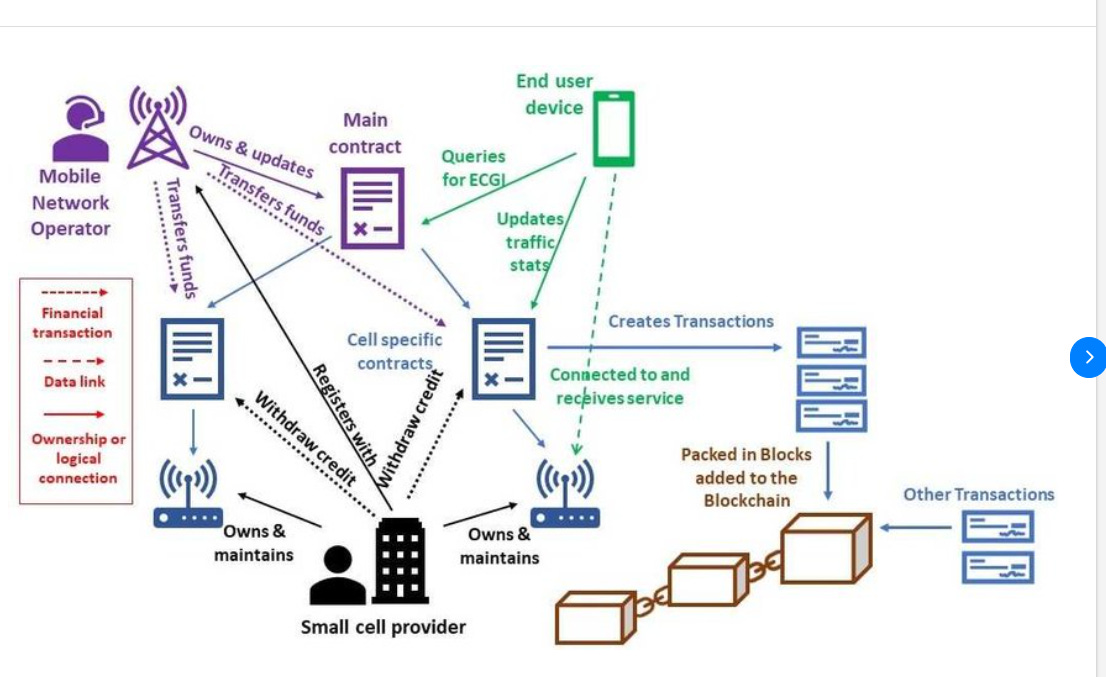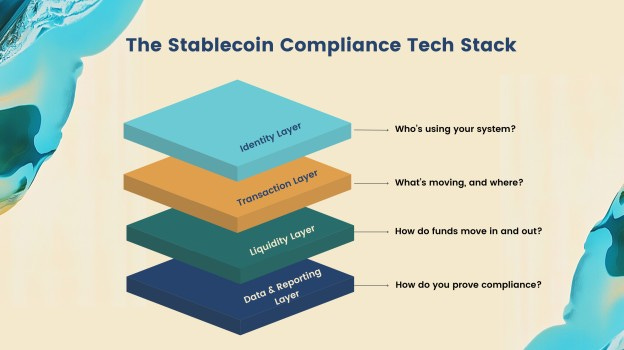The Stablecoin Builder’s Tech Stack: Wallets, Custody, Compliance, Oracles
A practical guide to the infrastructure powering modern stablecoin platforms, from multi-signature wallets to real-time oracle feeds and regulatory frameworks shaping 2025.
I remember sitting in a Lagos restaurant last year, watching a merchant accept USDT for the first time. His hands shook as he scanned the QR code. Twenty seconds later, the transaction confirmed. He looked up, grinned, and said, ‘This changes everything.’ That moment stuck with me because it wasn’t about the technology, it was about infrastructure finally working seamlessly enough that people could trust it.
Building a stablecoin platform in 2025 isn’t just about minting tokens anymore. The infrastructure underneath determines whether your project becomes the next Circle or fades into obscurity. According to Chainalysis, stablecoin transaction volumes hit $27.6 trillion in 2024, surpassing Visa’s transaction volume. That scale demands serious infrastructure.
So what exactly goes into building a stablecoin platform that can handle institutional money, regulatory scrutiny, and real-time settlement? The foundation starts with custody and wallets, but most builders get this wrong from day one. They treat wallet architecture as an afterthought when it should be the first decision that shapes everything else.
Let’s break down the tech stack piece by piece, but before then, have you experienced any payment wins? let us know in the comments!
Wallet Architecture
Your wallet setup determines security, user experience, and scalability all at once. Most serious stablecoin projects use a hybrid approach combining hot wallets for operational liquidity and cold storage for reserve management.
Fireblocks and Copper dominate institutional custody because they’ve solved the multi-signature problem elegantly. Traditional multi-sig wallets require multiple private keys held by different parties. Fireblocks uses multi-party computation (MPC) instead, splitting key shares across multiple parties without ever reconstructing the full private key. Think of it like a treasure map torn into pieces, no single piece reveals the location, but combine enough pieces and you can find it.
For operational wallets handling daily transactions, projects typically maintain 2-5% of total supply in hot wallets. Tether keeps roughly $4 billion liquid for redemptions out of their $140 billion market cap. The rest sits in cold storage or tokenized assets. This ratio shifts based on redemption patterns, but keeping too much hot means higher risk, while too little creates liquidity crunches during market volatility.
The emerging trend involves programmable custody solutions where smart contracts automatically manage collateral ratios. Anchorage Digital pioneered this for regulated institutions, letting treasury operations run autonomously while maintaining compliance controls.
But wallets alone won’t save you if your custody model has holes. That’s where things get interesting so don’t forget to share.
Custody Models
Custody determines who actually controls the assets backing your stablecoin. Get this wrong and you’re basically running an unsecured IOU system.
Centralized stablecoins like USDC use qualified custodians regulated entities like BNY Mellon or State Street that hold reserves in segregated accounts. Circle publishes monthly attestation reports from Grant Thornton showing exactly what backs each token. This transparency costs money but builds institutional trust.
Decentralized stablecoin projects like MakerDAO use smart contract custody where collateral lives on-chain in auditable vaults. Users lock $150 of ETH to mint $100 of DAI, and the system automatically liquidates positions if collateral drops below threshold ratios. The catch? You need robust oracle infrastructure to price that collateral accurately in real-time.
Hybrid models combine both approaches. Paxos pioneered this with PAXG, where physical gold sits in London vaults audited by third parties, while smart contracts handle the tokenization layer. Each token represents one fine troy ounce of London Good Delivery gold, serialized and tracked on-chain.
The custody question really boils down to: who do your users trust more? regulated institutions or transparent smart contracts?
The answer shapes your entire compliance strategy.
Compliance Infrastructure
Compliance isn’t sexy, but it’s what separates operational platforms from shutdown notices. Travel Rule compliance alone requires identity verification systems that most developers haven’t even considered.
Chainalysis and Elliptic provide the backbone for transaction monitoring. Their systems flag suspicious patterns in real-time, structuring, layering, unusual cross-border flows. When Binance integrated Chainalysis in 2023, they identified $2.4 billion in potentially suspicious transactions within six months.
For KYC, platforms typically integrate Onfido or Jumio for identity verification, then layer on screening tools like ComplyAdvantage for sanctions checking. The workflow looks simple on paper, user uploads ID, system verifies, done. Reality involves edge cases like expired documents, name mismatches, and jurisdiction-specific requirements that vary wildly.
Notabene emerged as the standard for Travel Rule compliance, letting stablecoins transmit originator and beneficiary information with each transaction above $3,000. This isn’t optional anymore, FinCEN enforcement actions in 2024 made that clear.
Smart contract auditing forms another compliance layer. OpenZeppelin and Trail of Bits conduct code audits catching vulnerabilities before deployment. The infamous Poly Network hack in 2021 exploited a custody contract flaw that three different audits somehow missed, resulting in $611 million stolen.
Compliance costs typically run 15-20% of operational budgets for regulated stablecoin issuers. That’s not overhead, it’s infrastructure that keeps you operational.
Oracle Systems
Oracles connect your on-chain stablecoin to off-chain reality. Price feeds, proof of reserves, exchange rates—oracles deliver the data that smart contracts can’t fetch themselves.
Chainlink dominates this space with decentralized oracle networks aggregating data from multiple sources. Their Proof of Reserve feeds let stablecoins cryptographically prove their backing in real-time. TrueUSD integrated Chainlink to provide transparent on-chain verification that reserves match circulating supply.
The oracle problem gets tricky with synthetic stablecoins pegged to assets beyond USD. If you’re building a stablecoin tracking the Turkish Lira or Indonesian Rupiah, you need forex data sources that update faster than traditional markets. API3 tackles this with first-party oracles where data providers run their own nodes, eliminating middleman risk.
Oracle failures cause catastrophic results. In 2020, Compound liquidated $89 million in loans when a Coinbase price feed glitch reported DAI trading at $1.30 instead of $1.00. Modern oracle systems use median aggregation across 7-15 data sources with outlier detection to prevent single points of failure.
Time-weighted average prices (TWAP) add another protection layer, preventing flash loan attacks from manipulating oracle feeds. Uniswap V3 provides TWAP oracles built directly into their DEX architecture, though they work best for liquid trading pairs.
For reserve attestations, some projects use Armanino real-time attestation services publishing reserve audits on-chain every business day. This creates an oracle feed for trust itself.
Payment Rails and Settlement
Settlement speed separates viable stablecoin infrastructure from theoretical whitepapers. Users don’t care about your consensus mechanism if withdrawals take three days.
Most stablecoin platforms integrate multiple blockchain networks. USDC operates on 15 different chains including Ethereum, Solana, Avalanche, and Polygon. This multi-chain approach requires bridge infrastructure that introduces new attack vectors. Wormhole and LayerZero provide cross-chain messaging, but both suffered major hacks that drained hundreds of millions.
For fiat on-ramps, partnerships with licensed money transmitters become necessary. Wyre and MoonPay handle card processing and ACH transfers, taking 1-3% fees for the privilege. Building your own licensed infrastructure costs millions in regulatory capital and years in licensing processes.
Enterprise settlement increasingly happens through SWIFT‘s blockchain integration pilot programs or Ripple‘s ODL system. JPMorgan’s JPM Coin processed $1 billion in daily transactions by late 2024, proving institutional appetite for blockchain settlement.
The settlement stack requires redundancy at every level—multiple node providers, backup RPC endpoints, failover payment processors. Alchemy and Infura dominate RPC infrastructure, but relying on a single provider means your entire platform goes down when they have issues.
Smart Contract Infrastructure
The code layer determining how your stablecoin actually functions deserves obsessive attention. Most projects fork existing implementations rather than building from scratch—smart move given the complexity.
OpenZeppelin contracts provide battle-tested ERC-20 implementations with built-in pausability, blacklisting, and upgradeability. Their Defender platform monitors deployed contracts, alerting teams to suspicious transactions or governance attacks in real-time.
Upgradeability creates tension between immutability and adaptability. Proxy patterns like UUPS or Transparent Proxies let teams patch vulnerabilities without redeploying, but introduce centralization risks. Tether can freeze individual addresses—useful for law enforcement cooperation, concerning for censorship resistance advocates.
Gas optimization matters more than developers initially realize. When Ethereum fees spiked to $200 per transaction in 2021, stablecoin transfers became economically unviable for amounts under $1,000. Layer 2 solutions like Arbitrum and Optimism now handle the majority of stablecoin volume, with transaction costs under $0.50

.
Monitoring and Analytics
You can’t manage what you don’t measure. Real-time monitoring infrastructure catches issues before they become incidents.
Dune Analytics dashboards track circulating supply, top holders, transaction volumes, and bridge flows. Public transparency through these dashboards builds user confidence—you’re not hiding anything if anyone can verify your metrics.
Internal monitoring requires more sophisticated tooling. Tenderly provides transaction simulation, debugging, and alerting. Teams can replay failed transactions, identify bottlenecks, and optimize gas usage without deploying to mainnet.
For security monitoring, Forta Network runs decentralized bots scanning for threats—unusual mint patterns, smart contract exploits, or governance attacks. The system flagged the Euler Finance hack within minutes, though by then $197 million was already gone.
Treasury management platforms like Safe (formerly Gnosis Safe) handle multi-sig operations with proposal workflows, execution delays, and audit trails. Most DAOs use Safe for treasury management because it’s been audited more thoroughly than any alternative.
Building Your Stack
Here’s what a realistic stablecoin tech stack looks like in 2025:
Custody Layer: Fireblocks MPC wallets for hot storage, Copper or Anchorage for cold storage, with a 3-5% hot wallet ratio.
Compliance: Chainalysis for transaction monitoring, Onfido for KYC, Notabene for Travel Rule, quarterly audits from Big Four accounting firms.
Oracles: Chainlink price feeds and Proof of Reserve, API3 for specialized data, TWAP oracles for DeFi integration.
Settlement: Multi-chain deployment via LayerZero, fiat on-ramps through MoonPay, enterprise settlement through Ripple ODL.
Smart Contracts: OpenZeppelin base contracts, Defender for monitoring, proxy pattern for upgradeability.
Infrastructure: Alchemy for RPC, Tenderly for debugging, Dune for public analytics, Safe for treasury operations.
Total infrastructure costs run $500k-2M annually for a mid-scale stablecoin platform. That’s before marketing, liquidity provision, or legal costs.
Infrastructure Checklist
Before launching your stablecoin platform, verify you’ve addressed these infrastructure requirements:
Multi-signature wallets configured with tested key recovery procedures.
Qualified custodian relationships established with monthly attestation reporting.
Transaction monitoring integrated with automated flagging and review workflows.
KYC/AML processes meeting FATF guidelines for your operating jurisdictions.
Oracle feeds from multiple independent sources with outlier detection.
Smart contracts audited by at least two reputable security firms.
Cross-chain bridge integrations tested under load with failover procedures.
RPC infrastructure redundancy across multiple providers.
Emergency pause functionality tested and documented. Legal entity structure supporting regulatory compliance.
Treasury management workflows with time-locks on major operations.
Public transparency dashboards for circulating supply and reserves.
Customer support infrastructure for failed transactions and redemption issues.
That merchant in Lagos didn’t care about MPC wallets or Chainlink oracles. He cared that the payment worked instantly, settled reliably, and converted to local currency without friction. Infrastructure enables that magic moment where technology disappears and utility emerges.
The Infrastructure Game
The stablecoin market will hit $300 billion in total supply by end of 2025, according to The Block’s projections. That growth requires infrastructure robust enough to handle institutional volumes while remaining accessible to individuals.
Winners in this space won’t be the platforms with the fanciest whitepapers or best marketing. They’ll be the ones whose infrastructure works when it matters—during market crashes, regulatory investigations, and bank run scenarios. Circle survived the Silicon Valley Bank collapse in 2023 precisely because their infrastructure allowed rapid response and transparent communication.
Building this infrastructure takes time, capital, and expertise. But cutting corners means joining the graveyard of failed stablecoin projects that prioritized speed over stability. The merchant checking out customers with USDT doesn’t want to be your beta tester.
Infrastructure isn’t the sexy part of crypto, but it’s the difference between building a platform that processes billions or building a cautionary tale. Choose your tech stack carefully, audit obsessively, and remember that in payments, boring reliability beats exciting innovation every time.
Subscribe to Canhav for crypto trends, stablecoin strategies, and merchant guides. Get alerts on 2026 updates!
Disclaimer: This article is for informational purposes only and does not constitute financial advice. Cryptocurrency and stablecoin investments carry risk. Always Do Your Own Research (DYOR) before making any financial decisions or implementing infrastructure solutions.






